Saint Cyril and Saint Methodius, beloved missionaries and brothers, who brought the light of the Gospel to the Slavic people, guide us in our journey of faith and help us to spread love and truth. Intercede for us, that we may grow in wisdom, courage, and compassion. May we, through your example, remain steadfast in our devotion to God and faithfully share His Word with all. Amen.
ST. CYRIL AND METHODIUS
ST. CYRIL AND METHODIUS
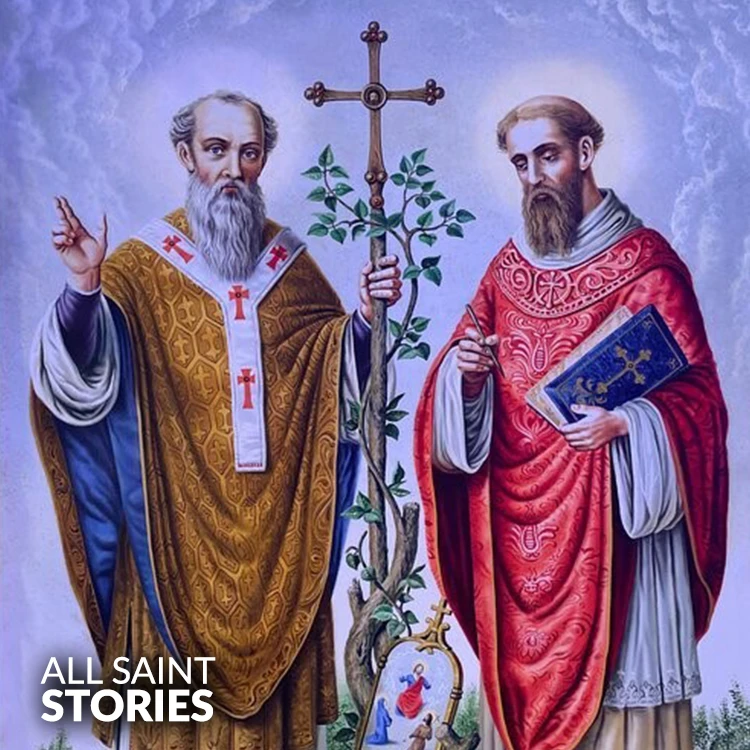
Saint Cyril and Saint Methodius were two Byzantine brothers from Thessalonica, known for their missionary work among the Slavic peoples. They are credited with the creation of the Glagolitic alphabet, which later evolved into the Cyrillic script. Their efforts in spreading Christianity to the Slavs, particularly in Moravia, made them key figures in the cultural and religious history of Eastern Europe. Their feast day is celebrated on February 14.
Saint Cyril and Saint Methodius, two Byzantine brothers from Thessalonica (modern-day Greece), are celebrated for their missionary work among the Slavic peoples during the 9th century. Cyril, born Constantine (c. 827 AD), and Methodius, his elder brother (c. 815 AD), were highly educated and served in various ecclesiastical and academic roles within the Byzantine Empire. They are perhaps best known for their efforts to evangelize the Slavs, particularly in the region of Great Moravia (modern-day Czech Republic and Slovakia), where they sought to spread Christianity and create a written system for the Slavic languages.
Cyril and Methodius were sent by the Byzantine Emperor Michael III and Patriarch Photios I to Great Moravia in 863 AD to aid in the conversion of the Slavic peoples, who were still largely adherents of pagan beliefs. One of their most significant contributions was the creation of the Glagolitic alphabet, the first alphabet specifically designed to write the Slavic languages. Cyril, a scholar and linguist, is credited with the development of this alphabet, which was later adapted into the Cyrillic script by his disciples. This script allowed the Slavic peoples to read and write in their own language, and it became a critical tool in the spread of Christianity, as well as Slavic culture and literature.
In addition to their linguistic achievements, Cyril and Methodius also translated key Christian texts into the Slavic language, including parts of the Bible and liturgical services. They celebrated the Divine Liturgy in the Slavic language, which was a revolutionary act at the time, as the Christian liturgy was traditionally conducted in Greek or Latin. This move was met with opposition from the Roman Catholic Church, which was centered in Rome, and led to tensions between the Byzantine and Roman authorities. However, their work laid the foundation for the Christianization of the Slavic peoples and the development of Slavic cultures.
Cyril and Methodius faced significant challenges during their mission, including resistance from the Roman Catholic clergy, who felt threatened by the use of the Slavic language in liturgy. Despite this, their missionary efforts were incredibly successful, and they made lasting impacts on the spiritual, cultural, and political development of Eastern Europe. Cyril died in 869 AD in Rome, and Methodius continued their work until his death in 885 AD. Methodius became the Archbishop of the Moravian Church and carried on his brother's mission after Cyril's passing, further spreading Christianity and the use of the Slavic language.
The legacy of Cyril and Methodius is immense. They are regarded as the "Apostles to the Slavs" and are revered by many Slavic nations, particularly in Eastern Europe, where their feast day is celebrated on February 14. They were canonized as saints by both the Roman Catholic Church and the Eastern Orthodox Church. Their creation of the Glagolitic and Cyrillic scripts made a profound contribution to the literary and religious life of the Slavic peoples, and they remain influential figures in the history of Christianity and Eastern European culture.
Video Not Found
The information on this website is compiled from various trusted sources. While we aim for accuracy, some details may be incomplete or contain discrepancies.
If you notice any errors or have additional information about this saint, please use the form on the left to share your suggestions. Your input helps us improve and maintain reliable content for everyone.
All submissions are reviewed carefully, and your personal details will remain confidential. Thank you for contributing to the accuracy and value of this resource.
Credits & Acknowledgments
- Anudina Visudhar (Malayalam) – Life of Saints for Everyday
by Msgr. Thomas Moothedan, M.A., D.D. - Saint Companions for Each Day
by A. J. M. Mausolfe & J. K. Mausolfe - US Catholic (Faith in Real Life) – Informational articles
- Wikipedia – General reference content and images
- Anastpaul.com – Saint images and reflections
- Pravachaka Sabdam (Malayalam) – Saint-related content and insights
We sincerely thank these authors and platforms for their valuable contributions. If we have unintentionally missed any attribution, please notify us, and we will make the correction promptly.
If you have any suggestion about ST. CYRIL AND METHODIUS
Your suggestion will help improve the information about this saint. Your details will not be disclosed anywhere.
© 2025 Copyright @ www.allsaintstories.com

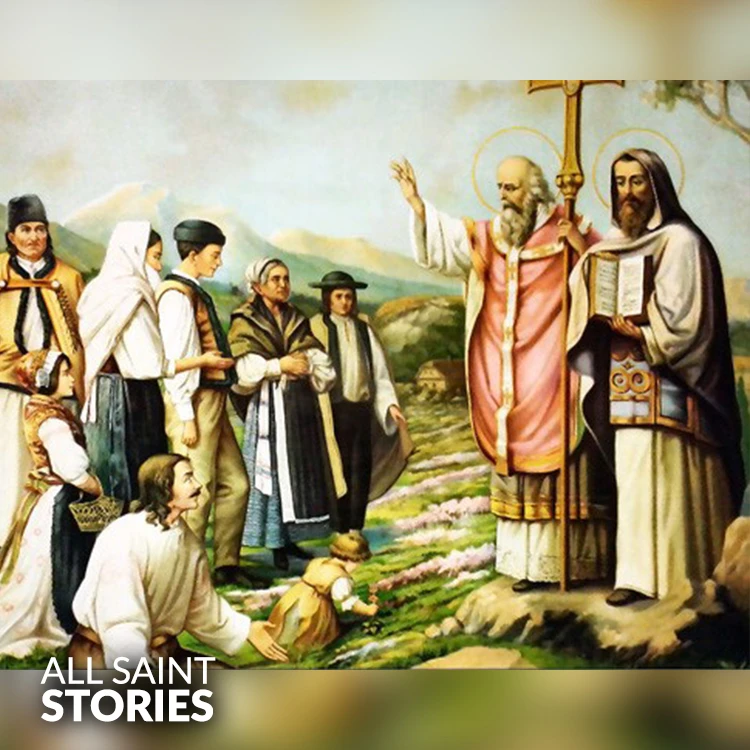
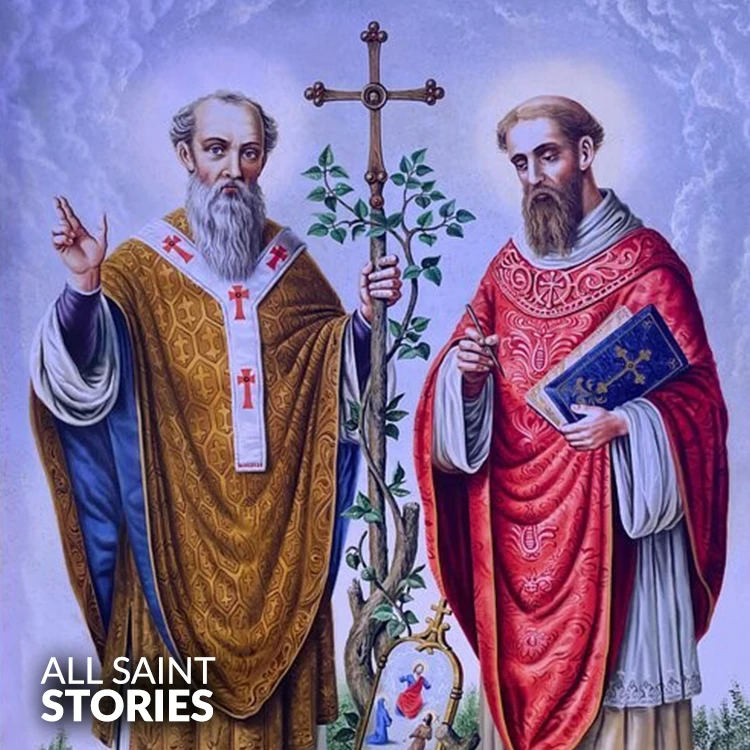
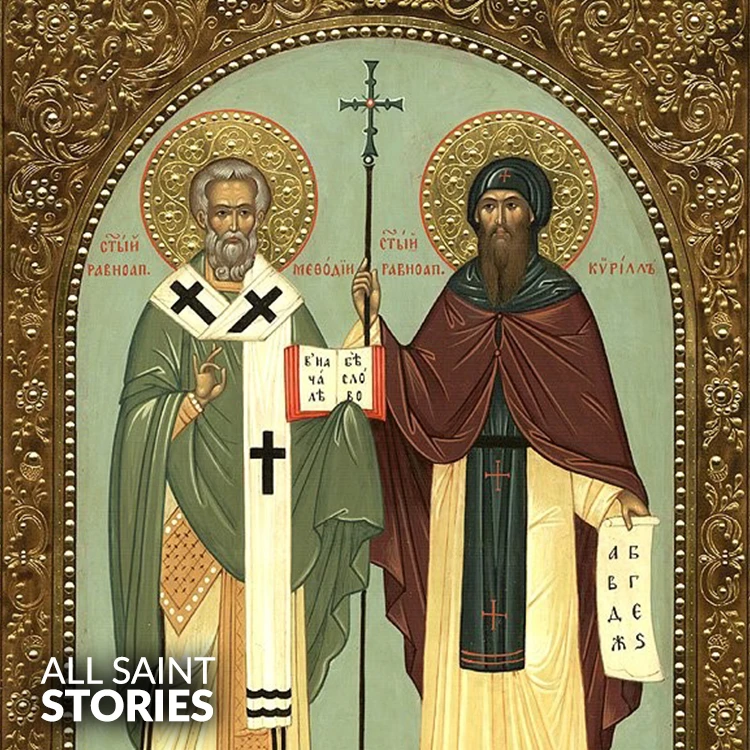
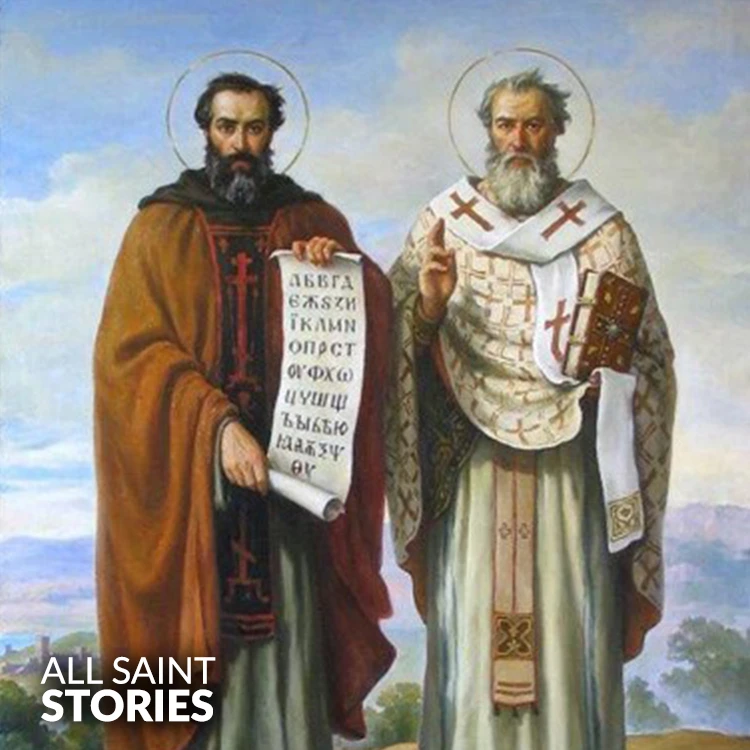
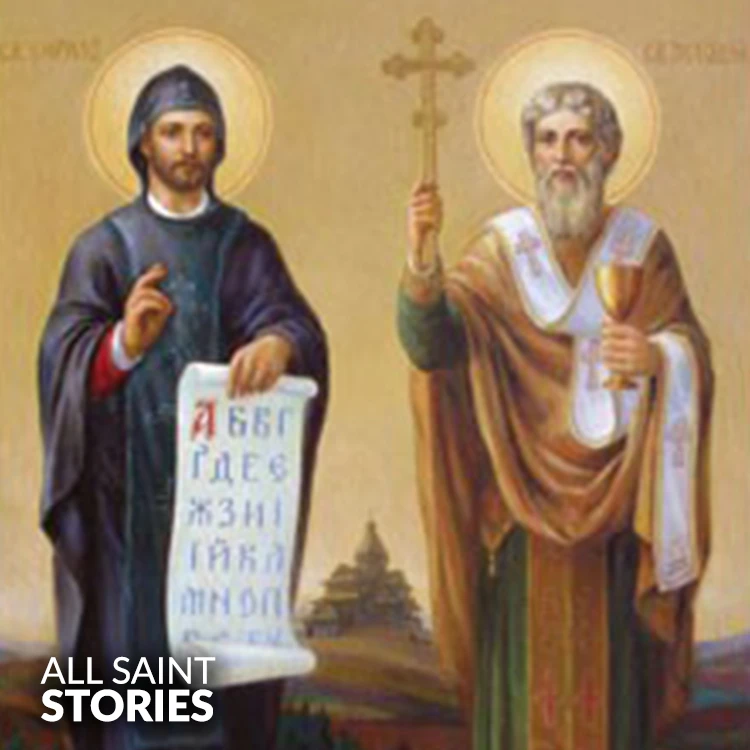
 English
English
 Italian
Italian
 French
French
 Spanish
Spanish
 Malayalam
Malayalam
 Russian
Russian
 Korean
Korean
 Sinhala
Sinhala
 Japanese
Japanese
 Arabic
Arabic
 Portuguese
Portuguese
 Bantu
Bantu
 Greek
Greek
 German
German
 Dutch
Dutch
 Filipino
Filipino